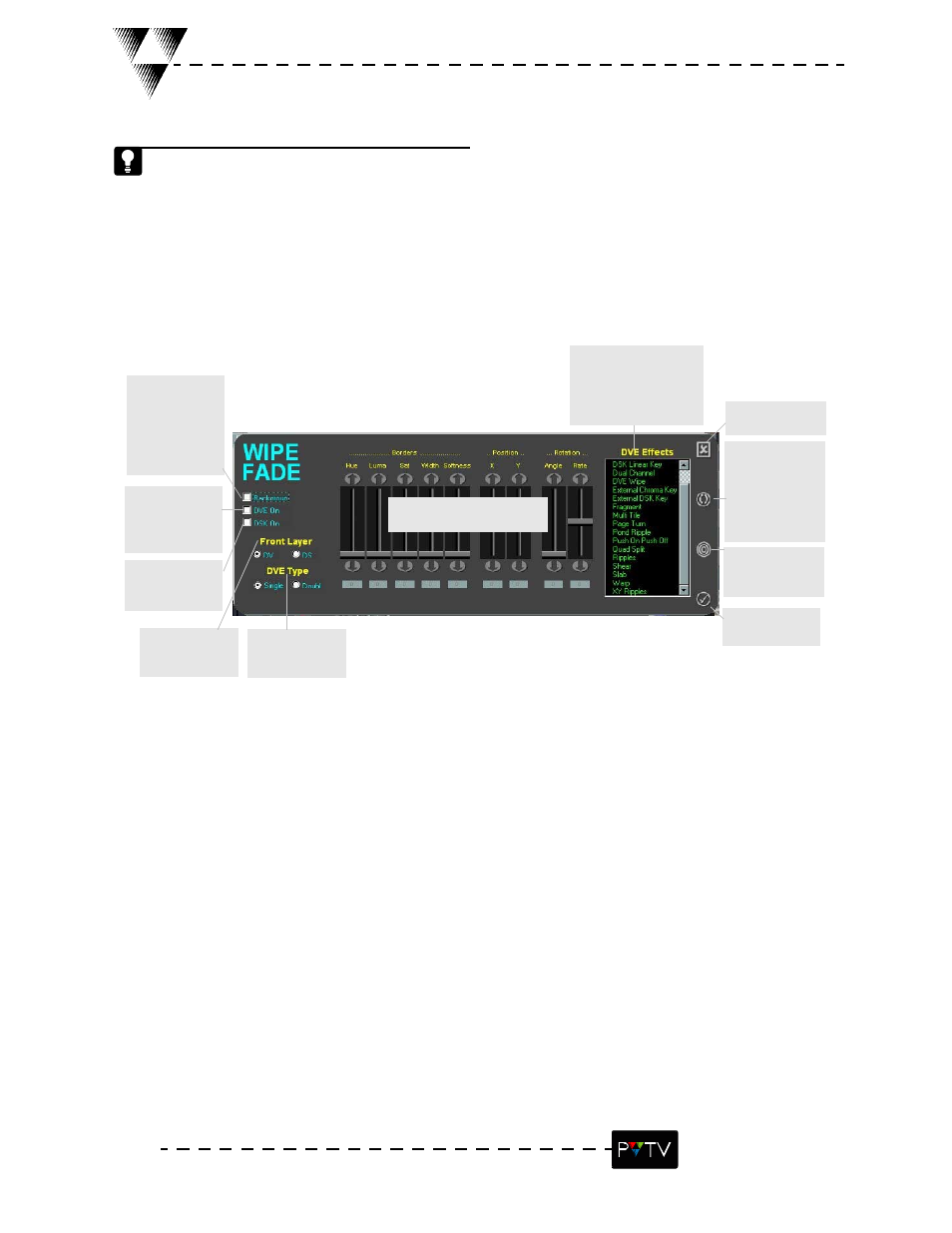Transitions overview, Studio news – Grass Valley PVTV NEWS Rev.4.02 User Manual
Page 30

26
STUDIO NEWS
Transitions Overview
Video transitions are created from a wipe, fade or sequence effect that transposes two video
images from two different external devices, such as cameras or VTRs. A transition can include
additional effects such as DVE and Process effects. After selecting a transition from the Transition List
on the DVE interface, the following Transition Setup dialog box appears.
Select Back-
ground to
change the
background
with the transi-
tion.
Select DVE ON
to turn on the
DVE layer with
the transition.
Select DSK ON
to layer with the
transition.
Toggle to select
the layer to be
on top.
Toggle to select
a one or two-
sided DVE.
Adjust the slider controls to
personal specifications.
To open the DVE
Setup dialog box,
select the desired DVE
effect from the DVE
Select OK when
finished.
Resets dialog
box settings to
system defaults.
Resets settings
to what
appeared when
the dialog box
was first
opened.
Select to close
and cancel.
There are four main types of transitions:
1. Wipe: Switches from one picture to another by moving a geometrical form (circle, line, arrow)
through the screen.
2. Fade: Dissolves a full picture to a black screen (Fade-out), or a black screen to a full picture (Fade-
in). a Cross-fade involves two pictures, one that fades in while the other fades out.
3. Mix: A Wipe or Fade combined with a DVE image. Process Effects are used to define and charac-
terize the DVE content.
4. Cut: One image is switched to another instantaneously.
